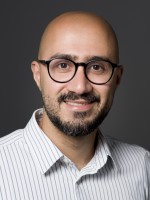Due to copyright issues, an electronic copy of the thesis must be ordered from the faculty. For the faculty to have time to process the order, the order must be received by the faculty at the latest 2 days before the public defence. Orders received later than 2 days before the defence will not be processed. After the public defence, please address any inquiries regarding the thesis to the candidate.
Trial Lecture – time and place
See Trial Lecture.
Adjudication committee
- First opponent: Professor Urbashi Mitra, University of Southern California, USA
- Second opponent: Professor Adam Noel, University of Warwick, UK
- Third member and chair of the evaluation committee: Professor Marit Inngjerdingen, University of Oslo
Chair of the Defence
Professor Trond Buanes, University of Oslo
Principal Supervisor
Professor Ilangko Balasingham, Oslo University Hospital and Norwegian University of Science and Technology (NTNU)
Summary
Novel drug delivery systems have been proposed utilizing nano-sized extracellular vesicles that are naturally released by all cell types and carry bio-molecules such as genetic acids. These vesicles play a crucial role in intercellular signaling for short- and long-distances in the body, making them relevant to both physiology and pathology. By engineering these vesicles to target specific cells, new possibilities for minimally- and non-invasive drug delivery systems are opened.
A computational methodology to theoretically quantify and analyze bio-nano communication between cells at the cellular level is essential for the development of a drug delivery system. In this thesis, the heart is used as a case study to investigate the basics of bio-nano communication between cells using extracellular vesicles and external control of cells. This research models the release of extracellular vesicles from cardiac cells such as ventricular and atrial cardiomyocytes mediated by intracellular calcium signaling. Also, this research models the propagation of the released extracellular vesicles in the cardiac extracellular matrix and their uptake and internalization at target cells. The use of computer simulations and mathematical modeling is an important aspect of this research as it enables the detailed analysis and predictions of extracellular vesicles' interactions with cells, which is fundamental for the development of efficient drug delivery systems. The research aims to provide tools for:
- Modeling intercellular bio-nano communication and inter-organ signaling,
- Modulation and control of cardiac cells to release extracellular vesicles,
- Prediction of extracellular vesicles propagation in an extracellular matrix,
- Uptake and internalization of extracellular vesicles to target cells,
- Development of novel externally controllable drug delivery systems for cardiac disorders,
- Providing initial results for optimizing experimental studies on extracellular vesicles and potentially other types of nanoparticles.
This research has the following benefits for medical applications:
- The models given in this research are applicable to other types of nano-sized particles/vesicles.
- The models given in this thesis are applicable to estimate the propagation of nano-sized particles such as extracellular vesicles in other types of extracellular matrix in multiple organs in the body.
- The computer models given in this thesis can be developed for a specific type of disease such as chronic heart failure by importing features from imaging methods in pre-clinical studies.
- The computer models given in this research make the basis of a comprehensive computer model of the human myocardium that can differentiate between different regions of the myocardium such as infarcted and healthy regions of the heart for modeling the treatment of cardiac disorders such as chronic heart failure.
- The models given in this thesis can be developed and expanded for different types of disorders by importing unique features of interest.
Additional information
Contact the research support staff.
